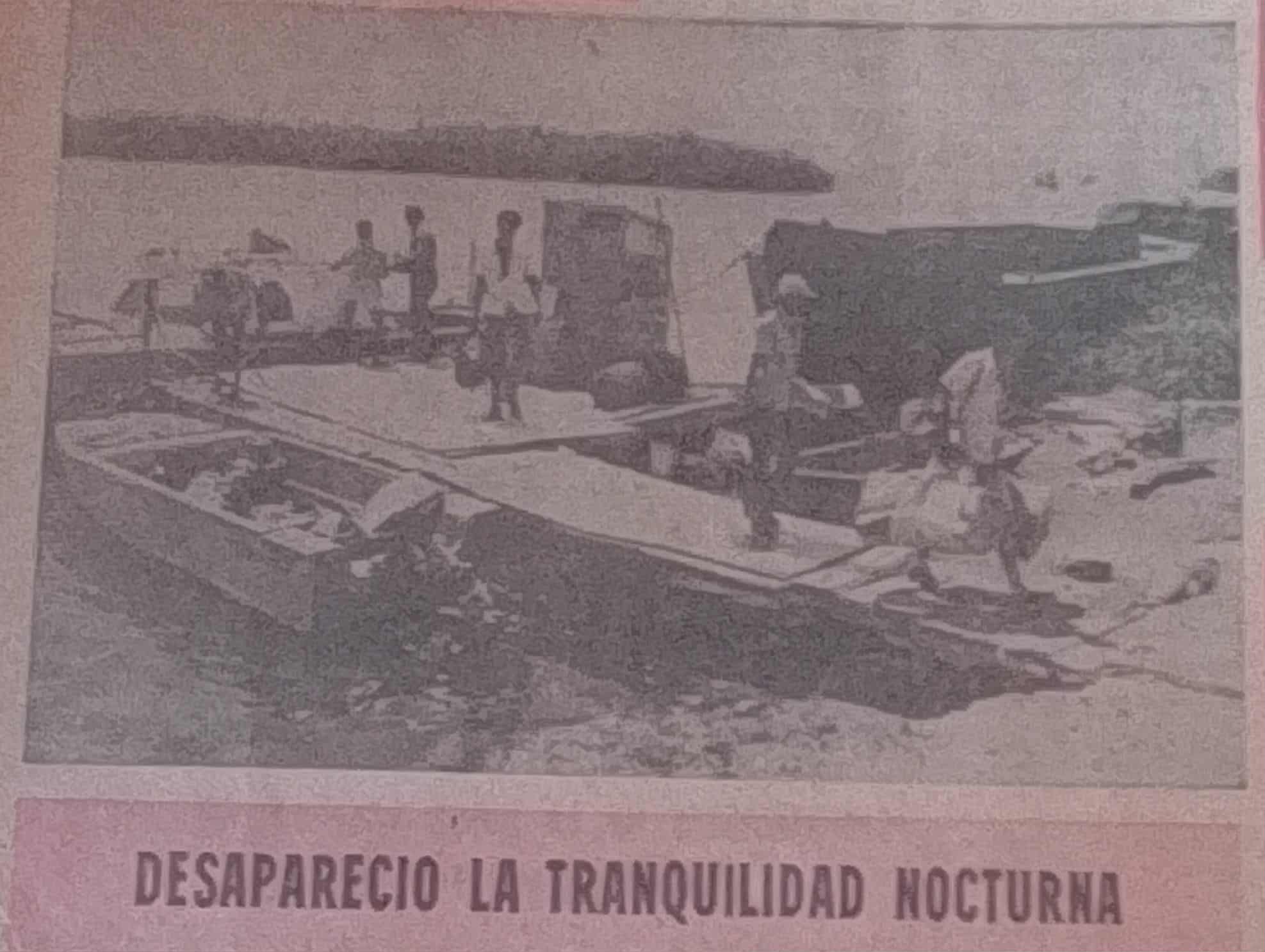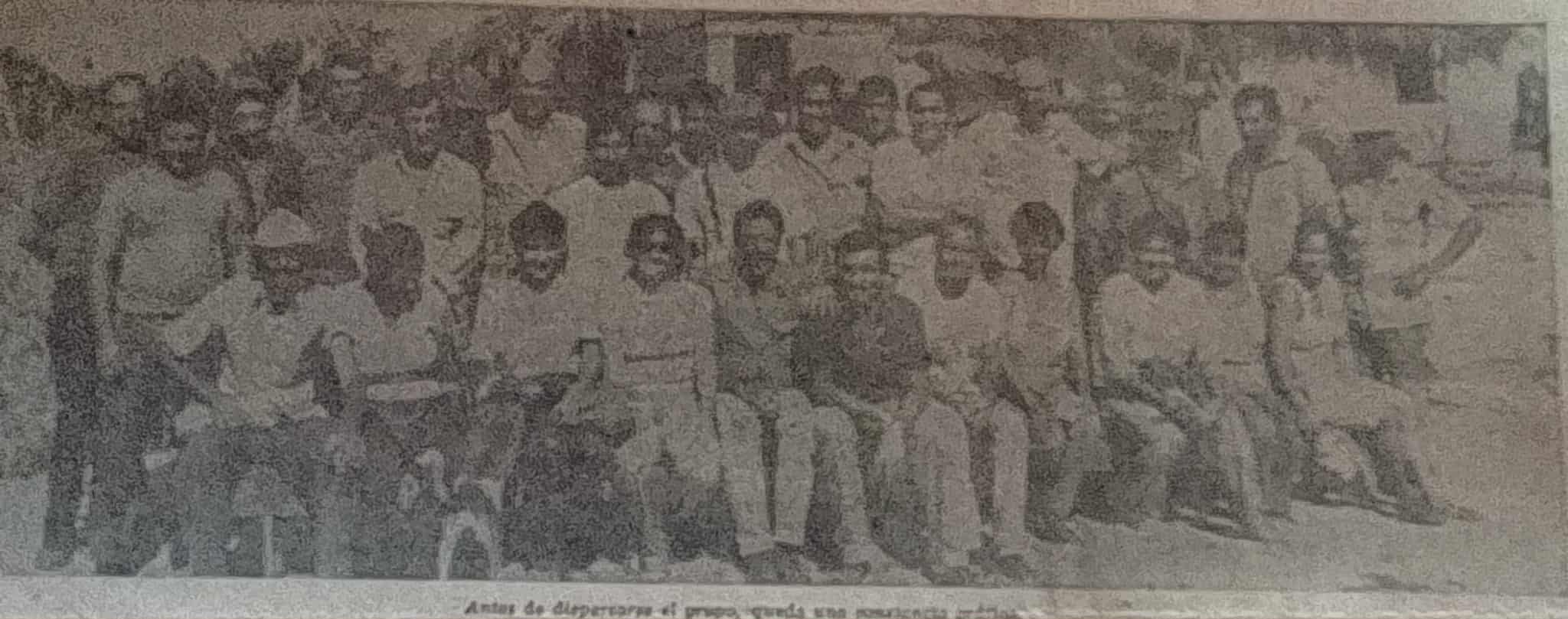
Camagüey, Oct. 3—Rough seas must be respected. After eight hours of sailing, the boat anchors off Cayo Romano. The sunset is dazzling. The sun radiates light: a bear, a man, mountains...
From the dock of the Nuevitas fishing cooperative, the ferro-cement vessel "Sierra de Cubitas" departed at 9:30 a.m. bound for Cayo Cruz. On board are the members of the first group of the "Che Anniversary" technical-investigative maneuver.
They form the advance party of the expedition: geodesists, geographers, topographers, and a meteorological technician, all in one way or another responsible for the exhaustive study of the tourism potential of the province's northern keys.
Yayo, the boat's skipper, plots the route. He heads east. The crossing to exit the Nuevitas Bay pocket is not difficult.
After passing Punta de Práctico, La Boca, things start to get complicated. We're out at sea, with depths estimated at 6,000 meters, more than 70 times the depth of the 26-story Plaza de la Revolución Ignacio Agramonte.
The boat rocks from side to side, but calm returns as we are protected by the coral reefs. It's a privilege to appreciate from near the Old Bahamas Channel all the wonders that Cayo Sabinal holds: Playa Bonita cove, Los Pinos, and Punta Piedra, the last stop in this area, with 33 kilometers of beautiful beaches.
Punta Cruz or Las Carabelas is an imaginary gateway that opens onto Cayo Guajaba and Romano. I forgot that east of Ballenato Grande, one of the three that guard Nuevitas, a minor failure in the engine cooling hose requires a mandatory stop. The time was short thanks to the speed and skill of El Yayo, Niñi, the engineer, and Papito, skipper of a cooperative boat.
Yayo says it's a good day for sailing; there's neither calm nor strong winds. The breeze is gentle with winds of 12 to 15 kilometers per hour.
The waves don't exceed a meter and a half in height. In the upper cabin, a kind of second floor, some people read, others try to sleep to dispel seasickness. And then there are those who persist in fishing. Finally, Barreiro catches the first of two picúas that enriched the afternoon's menu!

After anchoring the boat near Romano for the night, Miguelito, Barreiro, Toco, Mesa, Soto, from Geodesy and Cartography, and Manolo, a geographer from the research center of the Institute of Geodesy and Cartography and a professional diver, decide to go for a swim.
The skipper of the "Sierra de Cubitas" has had his share of hardships at sea. And he's a great man! He doesn't think he knows all the secrets: "The sea always holds surprises," he comments, as he gently turns the wheel.
What can't Yayo know about this keys, if he's spent 35 of his 49 years at sea? "There's always something we don't know," he says. "In the ocean, sailing isn't difficult. Close your eyes and go for it. The worst part is when you penetrate behind the reefs, into the coral reef, the heads, or the shallows. That's where it's said: either you know or you don't know."
Papito also has his philosophy that knowledge and practice go a long way: "You have to respect the rough sea; it can't intimidate you. If it intimidates you, it's worse."
Angelito, head of the engineering group and head of the geodesy workshop, is preparing to take a speedboat to Versalles on Cayo Romano to establish contact with his subordinate, Fulgencio Bernabé Ramírez, who is transporting a power plant to Cayo Cruz on a border patrol boat. He will also handle everything related to securing the ship and communicating with the power plant, where Suncia and Manolo, the only two permanent residents of the key, are awaiting us tonight.
At midnight, the time when the initial impressions of our destination were being finalized, the ship "Sorpresa" was anchoring in Puerto Piloto, north of Sola, with the personnel from Hydroeconomics, Hydrography, Applied Soil Research, and Aerial Photo Geodesists who will join the expedition in the coming hours. (Text: Enrique Atiénzar Rivero/ Radio Cadena Agramonte contributor) (Photos: Adelante)